How to Save On A Furnace
A furnace is typically out of sight, and somewhat out of mind. Nothing lasts forever, including your home’s heating system. An average furnace lasts about 12-13 years, based upon manufacturer, its installation and sizing, and its maintenance. Understandably, an HVAC system is a considerable household expense. This means you want to save on the purchase, smartly budget, and use the opportunity to consider your home’s overall comfort. Let’s take a look on how to save on a new furnace.

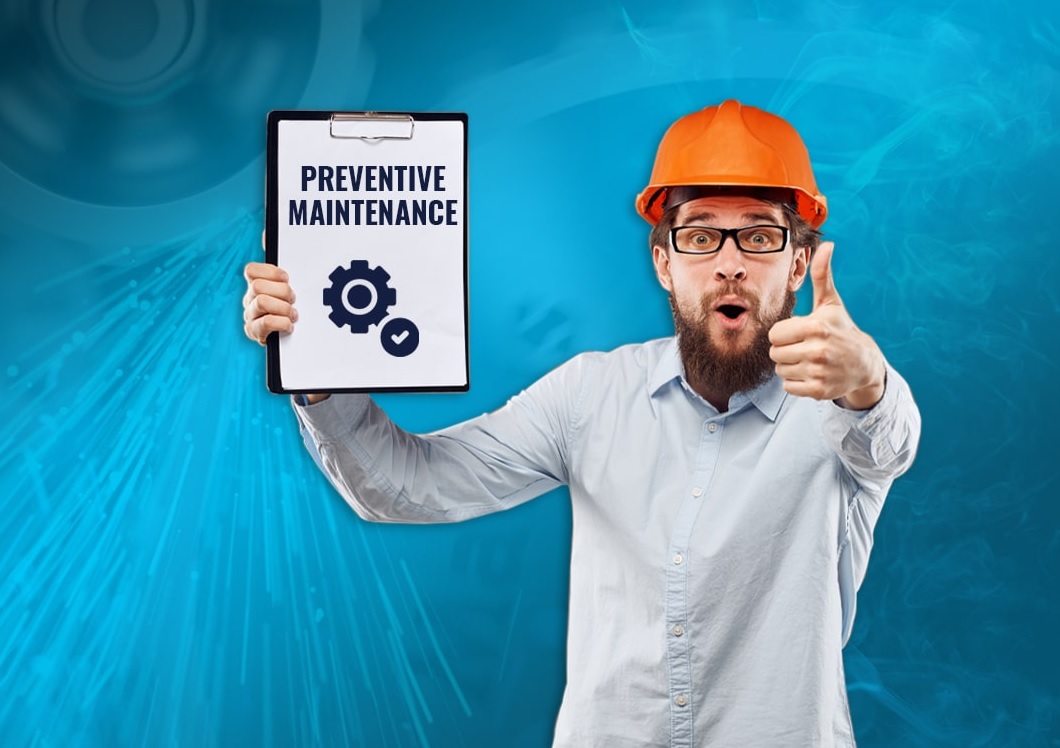
Federal Tax Credits
Uncle Sam is on a mission to reduce national energy costs, and is willing to lower your tax burden in order to prod you along. These tax incentives reduce the priace tag of energy-efficient home improvements, encouraging home owners to make less energy intensive choices.
Energy Efficient Home Improvement Credit (Section 25C)
This is part of the broader category of residential energy efficiency incentives under the Inflation Reduction Act (IRA) of 2022. The credit applies to specific types of high-efficiency HVAC systems. The key elements are:
Eligible Systems: High-efficiency air conditioning and heating systems, heat pumps, and air-source heat pump systems.
Credit Amount: Homeowners can claim up to 30% of the installation cost for qualifying HVAC equipment, with a maximum credit of $600 per year for individual systems (like a central air conditioner or heat pump).
Qualifying Products: To qualify, the equipment must meet the efficiency standards set by the IRS, typically those certified by ENERGY STAR or other recognized programs. These include heat pumpt, which must meet specific SEER (Seasonal Energy Efficiency Ratio) or HSPF (Heating Seasonal Performance Factor) ratings, depending on whether the system is for cooling or heating. Likewise, air conditioners and furnaces must also meet ENERGY STAR ratings for energy efficiency.
Claiming the Credit: No one enjoys IRS forms, but this one is worth paying attention to. Homeowners must complete IRS Form 5695, which applies to both the Energy Efficient Home Improvement Credit and other energy-saving measures like insulation, windows, and doors. The credit can be claimed on your annual tax return.
Eligibility: The credit is available for primary residences only. Second homes do not qualify for these incentives.
Expiration Dates: Tax credits for energy efficiency measures like HVAC upgrades have been extended under the IRA, but the specifics may change yearly. Be sure to confirm the current year’s eligibility when filing taxes, as some credits may phase out or require updated guidelines.
Example: Say you install an ENERGY STAR-certified heat pump costing $4,000, you can potentially receive a tax credit of up to 30% of the price (i.e., $1,200), provided it meets the necessary efficiency standards.
Get a Maintenance Plan
The time to purchase insurance is before the accident, not afterwards. The same principle applies to HVAC equipment. You want to acquire a maintenance plan when the equipment is new and in its best position, instead of after some years when breakdowns are more likely to occur. Here are the key reasons why purchasing a maintenance plan along with a new HVAC equipment is a smart investment:
Regular Maintenance: HVAC systems, like all machinery, require regular upkeep to run efficiently. A maintenance plan includes annual inspections and servicing, preventing wear and tear, extending the life of your system.
Prevents Costly Repairs: Routine check-ups identifies small issues before they turn into major, costly repairs. Addressing minor problems early can prevent you from needing expensive fixes later on.
Optimal Performance: Regular maintenance ensures that your HVAC system operates at peak efficiency, meaning it uses less energy to heat or cool your home. This translates into lower utility bill, since your system won’t have to work as hard.
Loyality Credits: With our maintenance plan, your yearly fees gains credits toward future purchases.
Improved Air Quality: Maintenance plans include cleaning and replacing air filters, promoting healthy indoor air quality by reducing allergens, dust, and contaminants.
Priority Scheduling: With a maintenance plan, you gain priority service over non-members. During the next winter storm when people’s HVACs are not running and everyone is clamoring for heat, you raise to the top of the stack.
Discounted Repairs: Maintenance plans offer discounts on repairs or parts replacement, lowering costs if your system needs repairs outside of the routine maintenance visits.
Preserve Manufacturer’s Warranty: Most manufacturers require that their HVAC systems be regularly serviced to maintain the warranty. By purchasing a maintenance plan, you ensure that your system is properly maintained, which can help protect your warranty in case of a malfunction.
Additional Protection: Some HVAC maintenance plans may include extended warranties on certain parts or labor, providing extra peace of mind that you won’t be left paying for major repairs out of pocket.


Manufacturer Rebates
Furnace manufacturers offer rebates encouraging homeowners to upgrade to high-efficiency systems. These manufacturer rebates reduce the initial cost of purchasing and installing a new furnace:
Seasonal Promotions: Many furnace manufacturers run seasonal rebate programs, often timed to coincide with heating season (fall and winter) or spring sales events. These promotions offer instant rebates or mail-in rebates when you purchase and install qualifying models. The rebate amount can vary, but it often ranges from $100 to $1,500.
Check Eligibility Requirements: Rebate offers from manufacturers often have specific eligibility requirements. These may include purchasing certain models, meeting minimum efficiency ratings, or installing the furnace through an authorized dealer or licensed contractor.
Remember Mail-in Rebates: In many cases, manufacturers offer mail-in rebates. This means you would pay for the furnace upfront, and then submit proof of purchase (such as receipts and model numbers) to the manufacturer for a refund.
Look for Instant Rebates: Some manufacturers provide instant rebates, which are applied at the point of purchase. These rebates typically don’t require you to submit documentation after the purchase, making them more convenient. The rebate is deducted directly from the total cost of the furnace or installation.
Keep in Mind Expiration Dates and Program Limits: Manufacturer rebate programs often have expiration dates or limited time frames, so it’s important to act quickly if you’re interested in taking advantage of the offer.
Local Utility Rebates
Many local utility power districts and energy providers offer rebates and incentives encouraging homeowners to upgrade to energy-efficient HVAC systems. These rebates can significantly reduce the upfront cost of installing new high-efficiency systems.
Eligibility: Typically, rebates are available to customers who are served by the utility company. Homeowners may need to meet certain criteria, such as installing the HVAC system in a primary residence or selecting products that meet specific energy-efficiency standards.
Qualifying Products: Rebates usually apply to high-efficiency equipment, such as air-source heat pumps, geothermal heat pumps, high efficiency furnaces, smart thermostats, and centrail air conditioners.
Rebate Amounts: Rebates typically range from a few hundred dollars to over $1,000, depending on the type of system and the utility company. The specific amount often depends on the equipment’s energy efficiency rating.
Program Participation: Some utilities require customers to apply for rebates before purchasing and installing equipment, while others may allow post-installation rebate claims.
Pre-Approval or Post-Installation: Some utility companies require customers to submit a rebate application and get pre-approval before purchasing and installing the equipment. Others require proof of purchase and installation after the system is in place.
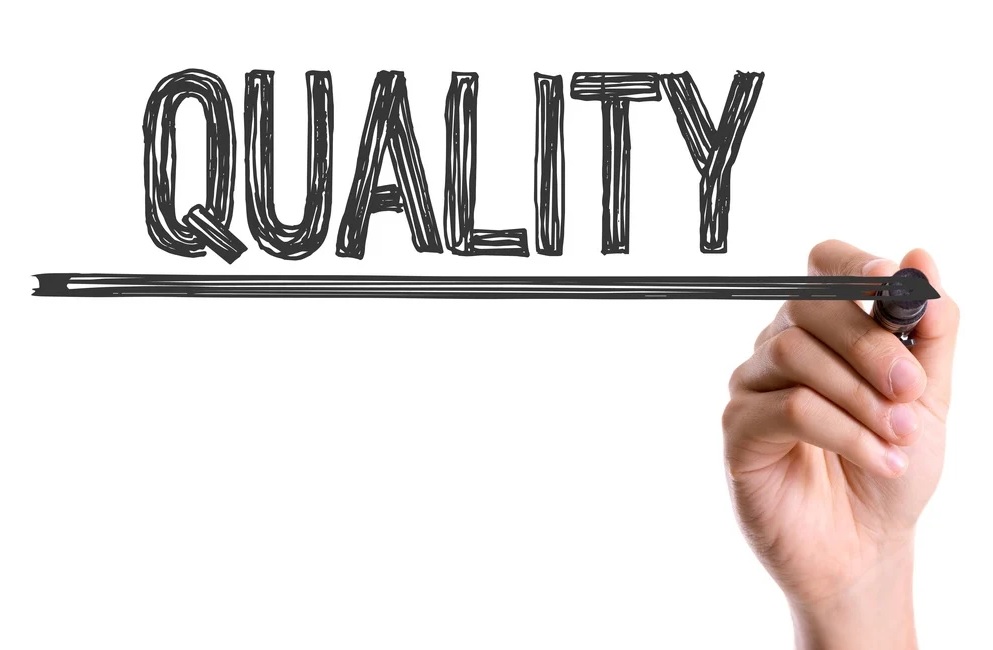

Furnace Quality
As a general rule, you get what you pay for. Furnaces vary significantly in quality, directly impacts their efficiency, durability, and performance. The difference in quality comes down the efficiency rating, materials used, technology features, and warranty. Here’s a breakdown:
Brand Reputation: High-end brands like Trane, American Standard, and Daikin are known for their long-lasting, energy-efficient, and reliable furnaces. These brands use advanced technology and offer better warranties, with an overall better build quality. Mid-tier and budget brands, such as York, Bryant, and Amana offer more affordable options, but their overall quality might not match that of premium brands. While these furnaces can still provide reliable service, the trade off is shorter warranties and fewer advanced features.
Efficiency Rating (AFUE): Annual Fuel Utilization Efficiency (AFUE) is a key indicator of a furnace’s energy efficiency, measuring how much heat the furnace can produce for every unit of fuel consumed. High-efficiency furnaces have an AFUE rating of 95% or higher, with some models reaching 98% or even higher. High-efficiency furnaces are more expensive upfront, but save significant amounts of money on energy bills over their lifespan. Standard-efficiency furnaces have an AFUE of 80%. These furnaces are less efficient and tend to cost more in terms of ongoing energy consumption, but are more affordable initially.
Construction and Materials: Top furnace brands use better materials for critical parts such as the heat exchanger, blower motor, and burners. These parts last longer and resist wear. For example, heat exchangers made of stainless steel or aluminum tend to have a longer lifespan and better corrosion resistance than those made of standard steel.
Technology and Features: High-end furnaces come with advanced features such as variable-speed blower motors, smart thermostats, two-stage or modulating burners. These features contribute to better comfort control, energy savings, and quieter operation. Less expensive furnaces have single-stage burners and standard, non-variable-speed blowers. These systems are more basic and less energy-efficient, but they are still capable of providing heat.
Warranty: Higher-quality furnaces from reputable brands come with longer warranties. For example, a premium brand may offer 10 years or even lifetime warranties on key components like the heat exchanger, while providing more comprehensive coverage for other parts. Budget-friendly models may only come with 5-year warranties or less on key components, with more limited coverage overall. These furnaces may require more frequent repairs or part replacements after the warranty period expires.
Energy Efficiency and Operating Costs: Higher-quality furnaces with advanced technology, such as modulating burners or two-stage operation, use energy more efficiently and can lower your long-term operating costs. While higher-end furnaces are generally more expensive to purchase, they typically result in lower monthly heating bills due to better energy efficiency. Conversely, budget furnaces may have lower upfront costs but can lead to higher energy costs over time due to less efficient operation.
Noise Levels: Premium furnaces provide feature noise-reducing technologies, such as insulated cabinets and variable-speed blowers, minimizing sound during operation. Lower-cost furnaces are noisier, especially if they have standard single-stage blowers or less insulation.
Reliability and Longevity: High-quality furnaces are built to last longer, with proper maintenance, you can achieve decades of reliable service. With proper maintenance, premium furnaces can continue running efficiently for decades. Lower-quality furnaces have a lifespan of 8 to 12 years and may require more frequent repairs and part replacements. They may also experience issues sooner than higher-end models.
Furnace Capacity
Heating capacity in furnace models varies based on several factors, such as size, efficiency, and type of fuel used. The heating capacity is measured by BTUs (British Thermal Units), indicating the amount of heat the furnace produces per hour. Furnaces are designed to meet the specific heating needs of a home, and the appropriate size is crucial for optimal performance and energy efficiency. Here’s how the heating capacity varies:
BTU Rating (Heating Capacity)
- Residential models generally fall in the range of 40,000 to 120,000 BTUs.
- Smaller Homes (Under 1,500 sq. ft.): A furnace for a smaller home may have a capacity ranging from 40,000 to 60,000 BTUs. This is sufficient to heat smaller spaces with moderate insulation in mild to cold climates.
- Medium Homes (1,500 to 2,500 sq. ft.): For medium-sized homes, furnaces typically range from 60,000 to 80,000 BTUs. This ensures the furnace can effectively heat the living space while maintaining comfort during winter.
- Larger Homes (Over 2,500 sq. ft.): Larger homes may require furnaces with capacities of 100,000 to 120,000 BTUs or more. This allows for efficient heating throughout the home, including larger rooms, multiple stories, or homes with extensive windows and poor insulation.
Climate and Insulation Considerations
- Colder Climates: Homes in colder climates generally need furnaces with higher BTU ratings. The more extreme the winter temperatures, the more heat is required to maintain indoor comfort. A furnace with a higher heating capacity (BTU rating) is needed to compensate for heat loss in homes exposed to harsh winters.
- Warmer Climates: In milder climates, a furnace with a lower BTU capacity may be sufficient, as the heating demands are less intense. Properly insulated homes in these regions may also require a lower BTU output.
Single-Stage vs. Two-Stage vs. Modulating Furnaces
- Single-Stage Furnaces: These furnaces have one heat output level (high), which means they operate at full capacity whenever they are running. The heating capacity is typically fixed and cannot be adjusted to match demand, making them less efficient in certain scenarios.
- Two-Stage Furnaces: Two-stage furnaces have two levels of heating capacity: a lower stage for milder weather and a higher stage for colder weather. This allows for more precise temperature control and better energy efficiency. The heating capacity adjusts to the needs of the home, depending on outdoor temperature.
- Modulating Furnaces: Modulating furnaces can adjust their heating capacity in small increments, providing the most precise and efficient temperature control. They continuously vary the output, offering a smooth and consistent flow of heat. These models tend to have a higher upfront cost but can offer significant energy savings over time.
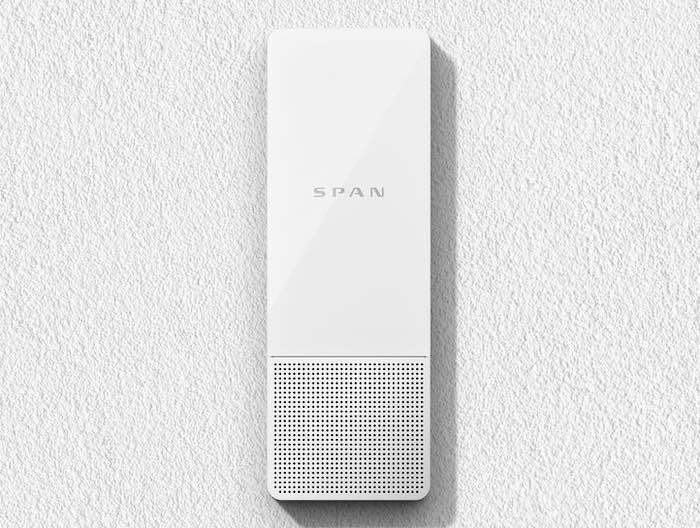
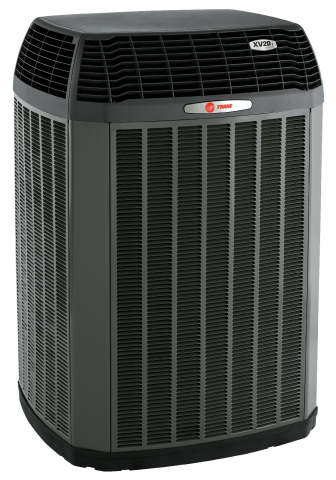
Install with a Smart Electrical Panel
A smart panel is a next-generation electrical panel integrating smart technology providing homeowners with greater control, monitoring, and energy management of their electrical systems. The prospect of installing a smart panel often comes up with a new furnace installation since both encompass the overall topic of home energy usage and comfort. A smart panel make homes more energy-efficient, secure, and sustainable.
Key Benefits of a Smart Panel
Energy Efficiency: By providing visibility and control over your home’s energy usage, the SPAN Smart Panel helps homeowners identify inefficiencies and optimize their energy consumption, leading to cost savings on electric bills..
Environmental Sustainability: When integrated with solar panels and energy storage, the SPAN Smart Panel maximizex the use of renewable energy, reducing reliance on fossil fuels and decreasing the overall carbon footprint.
Cost Savings: By offering the ability to manage peak energy demand, the SPAN panel helps homeowners avoid higher electricity rates, particularly during times of high grid demand. Additionally, it can facilitate the use of cheaper off-peak electricity or solar energy, further reducing costs.
Improved Control and Convenience: Apps allows users to monitor and control energy usage remotely, offering convenience and flexibility. Homeowners can easily schedule energy-intensive activities, like charging their electric vehicle, during optimal times.
Future-Proofing: As the energy landscape evolves with more sustainable technologies and smart home systems, smart panels can be upgraded and adapted to new devices, making it a long-term solution.
Considerations
Initial Cost: The smart panel tends to be more expensive upfront than traditional electrical panels due to its advanced technology and integration capabilities. However, this cost may be offset by long-term energy savings and rebates from utility companies or tax incentives for energy-efficient home upgrades.
Installation: Installing a smart panel requires a licensed electrician, as it involves replacing the existing electrical panel.
Install with a heat pump
Installing a heat pump at the same time as a new furnace provides several benefits, especially when it comes to energy efficiency, cost savings, and overall comfort. The key advantages:
Dual Heating & Cooling: A heat pump can both heat and cool your home, which means it can replace your air conditioner. This gives you a more energy-efficient solution since heat pumps are often more efficient than traditional furnaces, particularly in milder climates.
Lowers Energy Bills: A heat pump, especially when paired with an efficient furnace, reduces your overall energy consumption. During milder months, the heat pump can handle the heating load, which is more energy-efficient than using a furnace.
Consistent Temperature Control: A heat pump provides more consistent heating and cooling compared to traditional heating systems. This leads to a more comfortable environment, as heat pumps distribute warm or cool air more evenly across your home.
Better Humidity Control: Heat pumps dehumidify the air in the summer and maintain a comfortable indoor humidity level during winter as well, improving air quality and comfort.
Less Wear and Tear on Furnace: By using the heat pump for mild winter days or cooling during the summer, you reduce the workload on your furnace, extending its life.
Optimal Performance: Installing both systems at once allows for optimal system sizing and design. A professional can ensure that the furnace and heat pump are correctly integrated into your home’s layout, optimizing performance and energy savings.
Seamless Operation: Many modern heat pumps and furnaces can be integrated to work together efficiently. For example, when temperatures drop too low for the heat pump to operate efficiently, the furnace can automatically take over, ensuring you never lose comfort.
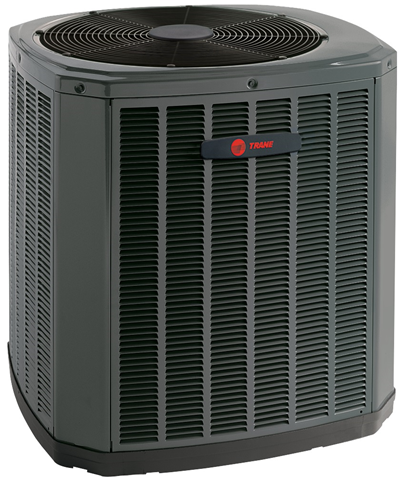
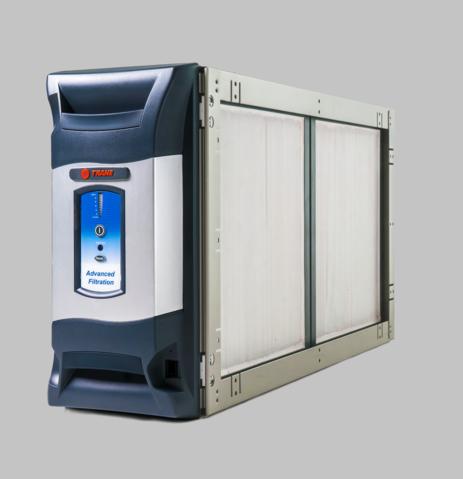
Installing with an air conditioner
Installing an air conditioner at the same time as a furnace provides several significant benefits, both in terms of convenience and long-term savings. The main advantages:
Reduced Labor Costs: When both systems are installed at the same time, you can save on labor costs. The HVAC technician only needs to make one visit and perform the installation of both systems, which can reduce the overall cost of the installation compared to doing them separately at different times.
Bundle Discounts: Many HVAC companies offer discounts when you purchase both a furnace and an air conditioner together. By bundling the two systems, you might be able to access special deals.
Optimized Performance: Installing both a furnace and an air conditioner at the same time ensures that both systems are compatible with each other. Newer systems are designed to work together more efficiently, and installing them together helps ensure they operate optimally.
Coordinated Features: Modern furnaces and air conditioners often come with integrated features that improve performance when both are installed together, such as improved airflow, energy efficiency, and air filtration.
Energy-Saving Technology: Newer furnaces and air conditioners are often more energy-efficient than older models. Installing both systems at the same time allows you to take full advantage of the latest energy-efficient technology.
Coordinated Operation: When both systems are new and properly matched, they can operate more efficiently together. For example, a new furnace will be able to heat your home without overworking, and a new air conditioner can cool it without requiring as much energy, since both are designed to complement each other.
Consistent Indoor Climate: With both systems installed at the same time, your home will be better equipped to maintain a consistent indoor temperature. The furnace and air conditioner will both be working in harmony, ensuring that your home remains comfortable year-round, with minimal temperature fluctuations.
Better Air Quality: Modern HVAC systems often include high-efficiency air filtration and humidity control. Installing both systems at the same time ensures that these features are working together to improve your home’s air quality, keeping it fresh and healthy.
Longer Lasting Systems: By installing both systems together, you ensure that they are both new and designed to work together, reducing wear and tear on each system.
Single Maintenance Schedule: When both systems are installed at the same time, it’s easier to schedule maintenance for both the furnace and air conditioner on the same day.
Unified Service Plan: Some HVAC companies offer maintenance plans that cover both the furnace and air conditioner. Bundling these services can help reduce the overall cost of maintenance and ensure both systems are inspected and maintained regularly.
Same Warranty Period: When both systems are installed together, they are often covered by the same warranty period. This makes it easier to manage warranty claims and ensures that both systems are protected for the same duration.
Matching Equipment: Installing a new furnace and air conditioner at the same time ensures that both systems are modern, efficient, and compatible with each other. If you were to replace one system at a time, you risk mismatching older equipment with newer systems, which can lead to inefficiencies and performance issues.
Coordinated Sizing: Furnace and air conditioner systems need to be properly sized for your home to work efficiently. Installing them at the same time allows the contractor to properly size both systems to meet your heating and cooling needs, avoiding the potential for inefficiencies caused by incorrectly sized equipment.
Installing with an Air Filter
Installing an air filtration system at the same time as a new furnace offers several benefits enhancing both the performance of your HVAC system and the quality of the air in your home. The key advantages:
Cleaner Air: An air filtration system helps remove dust, allergens, pet dander, mold spores, and other airborne particles, improving the overall air quality in your home. Installing at the same time as your new furnace ensures that both systems are working together to keep your indoor air clean and healthy.
Healthier Environment: With better filtration, individuals with respiratory issues such as asthma or allergies benefit from a cleaner living environment. Reduced airborne allergens can lead to fewer health problems and a more comfortable home.
Cleaner Furnace Components: A high-quality air filtration system helps trap dust and debris before they enter the furnace, reducing the accumulation of dirt and grime on the furnace’s internal components, such as the blower, coils, and heat exchanger. This extends the lifespan of your furnace and helps it run efficiently.
Prevents Clogs: Better filtration reduces the likelihood of dust and dirt clogging the furnace’s components, such as the air intake and ducts. This means your furnace will be able to perform optimally, reducing strain and minimizing the risk of breakdowns.
Reduced Energy Consumption: With less dust and debris in the furnace, the system doesn’t work as hard to circulate air throughout your home. A cleaner, more efficient furnace uses less energy, lowering energy bills.
Coordinated Installation: Installing both the furnace and air filtration system at the same time makes the process more convenient, as the HVAC technician can integrate the filtration system into the furnace installation without needing separate visits or additional time for installation.
Matching Systems: When both systems are installed together, they can be chosen to work seamlessly with each other, ensuring optimal performance. The filtration system can be properly sized and designed to complement the furnace, maximizing both efficiency and air quality.
Less Frequent Maintenance: With cleaner air circulating through the system, you’ll likely need less frequent maintenance for both the furnace and the filtration system. The filtration system reduces the amount of dust and debris that can accumulate in the furnace, meaning fewer cleanings and repairs.
Prevents Dust Buildup in Ducts: Installing an air filtration system alongside a new furnace reduces the amount of dust and debris circulating through the ducts. This can prevent the ducts from becoming clogged, which in turn reduces the need for frequent duct cleaning and maintenance.
Less Frequent Filter Replacement: If your furnace and air filtration system are integrated properly, the filtration system will catch more contaminants before they can reach the furnace, reducing the need for frequent filter replacements or repairs.
Adjustable Filtration Options: Modern air filtration systems include features like adjustable settings, allowing you to control the level of filtration based on your needs. For example, if you have pets or live in a pollen-heavy area, you can adjust the system to provide enhanced filtration during certain times of the year.
Advanced Air Purification: Many air filtration systems, such as HEPA filters, UV light filters, or electronic air cleaners, offer advanced air purification options that help to kill bacteria and viruses, in addition to filtering out common airborne allergens and pollutants.
Balanced Air Distribution: An efficient air filtration system helps maintain consistent airflow throughout your home, ensuring that heated air from your furnace circulates evenly. This can help eliminate hot or cold spots, ensuring your home maintains a comfortable temperature.
Less Dust in the Home: By filtering out airborne particles before they circulate through the furnace and ducts, a filtration system reduces the amount of dust that can settle on furniture, floors, and surfaces, keeping your home cleaner overall.
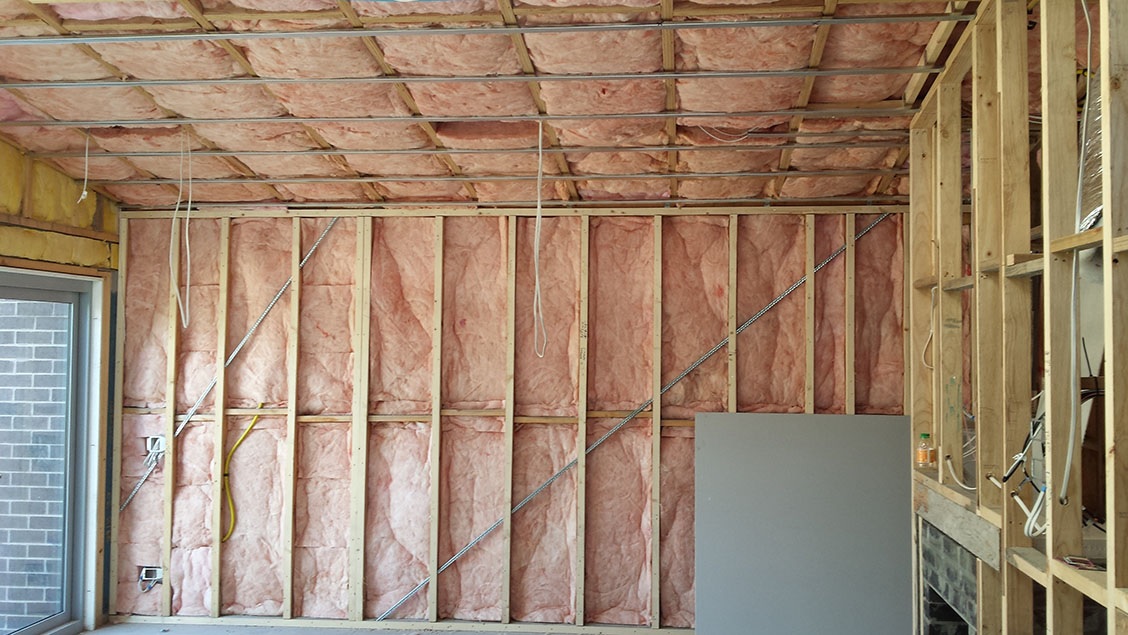

Adequate Household Insulation
You wouldn’t run your furnace during the winter with the door open. If your house isn’t adequately insulated, all of that heat you’re paying for is drifting through leaking windows and walls to the outside. Here’s why insulation matters:
Prevents Heat Loss and Gain: Proper insulation maintains the desired temperature inside your home by preventing heat from escaping in the winter and keeping it out during the summer. When your HVAC system works in an insulated home, it doesn’t have to work as hard to maintain a comfortable indoor climate.
Reduces HVAC Load: Insulation reduces the load on your new HVAC system, meaning it doesn’t have to run constantly or at full capacity to keep your home comfortable. This results in lower energy bills and increased system efficiency.
Even Distribution of Temperature: Insulation ensures that your HVAC system can heat or cool the entire home more evenly. Without adequate insulation, some areas of your home may remain too hot or too cold, forcing the HVAC system to work harder to compensate for temperature imbalances.
Faster Response Time: A well-insulated home allows your HVAC system to reach the set temperature quickly because the temperature changes are less influenced by external weather conditions.
Less Wear and Tear: When insulation is lacking, your HVAC system has to work overtime to maintain comfort. Over time, this extra workload increasing wear and tear on components, shortening the lifespan of your system.
Fewer Repairs: With less strain on the system, the likelihood of experiencing mechanical issues or breakdowns is reduced, saving you on repair costs over time.
Consistent Indoor Climate: Insulation helps maintain a consistent indoor temperature by reducing drafts and preventing cold spots or areas that are too warm. This enhances comfort, as you won’t have to deal with fluctuating temperatures or an unevenly heated or cooled home.
Noise Reduction: Insulation can also act as a sound barrier, reducing the noise that can be transmitted from your HVAC system or from outside. This adds to the overall comfort of your home by keeping the environment quieter.
Preventing Air Leaks: Adequate insulation seals cracks and gaps causing air leaks, which in turn can affect indoor air quality. When your home is properly insulated, the air it circulates will be cleaner and more evenly conditioned.
Control of Humidity: Insulation helps with humidity control. Without insulation, your HVAC system struggles to regulate humidity, leading to mold growth or uncomfortable levels of moisture. Insulation keeps humidity levels in check, improving indoor air quality.
Take Advantage of Financing
The advantage of using the vendor’s financing mechanism is, they’ve been able to identify financial institutions that optimize on HVAC purchases and provide the most attractive terms for such a purchase. It will certainly beat credit card interest rates, and probably whatever your bank can offer. Key benefits of using the vendor’s financing:
Easier Affordability: HVAC systems, especially high-efficiency or high-end models, can be expensive. Low-interest financing allows you to spread the cost over time, making it more manageable. Rather than paying the full amount upfront, you can make smaller monthly payments.
Helps Budgeting: For homeowners who may not have enough savings for a large one-time purchase, financing allows them to budget better by breaking the cost into predictable, smaller payments.
Maintain Savings: Low-interest financing allows you to preserve your savings for other emergencies or important purchases.
Potential for 0% Interest: Some HVAC vendors offer 0% financing, meaning you pay the exact price of the system with no additional cost
Upgrade Your System: With low-interest financing, you might be able to afford a higher-end or more energy-efficient HVAC system than you initially considered. Many people opt for models that offer better energy savings or more advanced features when they have financing options, ultimately improving long-term comfort and efficiency.
Immediate Comfort and Energy Savings: You can enjoy the benefits of a modern HVAC system right away, such as improved air quality, better temperature control, and lower energy bills, without having to wait until you can afford the system in full.
Build or Improve Credit: Making consistent, on-time payments on a financed HVAC purchase can positively impact your credit score. If you’re looking to improve your credit, this could be a way to demonstrate financial responsibility and show that you can manage debt wisely.
Putting all together
– Don’t install yourself. Some folks fancy themselves as handy, watch 20 minutes worth of YouTube videos, and then begin to think a furnace installation is within their skill set. It’s not. This isn’t the sort of thing you can afford to get wrong. No matter how much you think you learned, it’s not going to top someone with decades of installation experience.
– Get an estimate from a license/bonded/firm. A furnace installation requires knowledge and skill. Reputable vendors will be able to tangibaly back up their work.
– Skip the off-brand manufacturers. A furnace isn’t the sort of appliance you should be purchasing off of Temu. At best, it’s a waste of money; at worst, it’s a danger. Stick with the established brands that can back up their furnace with warranties and professional installers.
– Think beyond the furnace: When dealing with your home’s heat, you’re getting into the larger topics of home comfort and air quality. Be prepared to address your home’s comfort systems as a whole, instead of just one component.
– Stack rebates and incentives. For the smart consumer, you can get units on sale, take advantage of rebates, and earn tax credits.
– Don’t finance on your credit cards. Your furnace vendor should already have identified financing firms with attractive rates optimized for furnace purchases.
– Remember the labor costs. Some firms quote low prices on the furnace, and then make it up with exorbitant labor costs. Think in terms of the entire package, just not the shinny sticker sales price of the furnace.
– Take advantage of Seasonality. While seasonality doesn’t raise-or-lower prices as one might imagine, it does effect speed-of-service. There’s a difference between asking for a furnance installation during a January freeze vs. a June day.
Why You Want to Hire Us
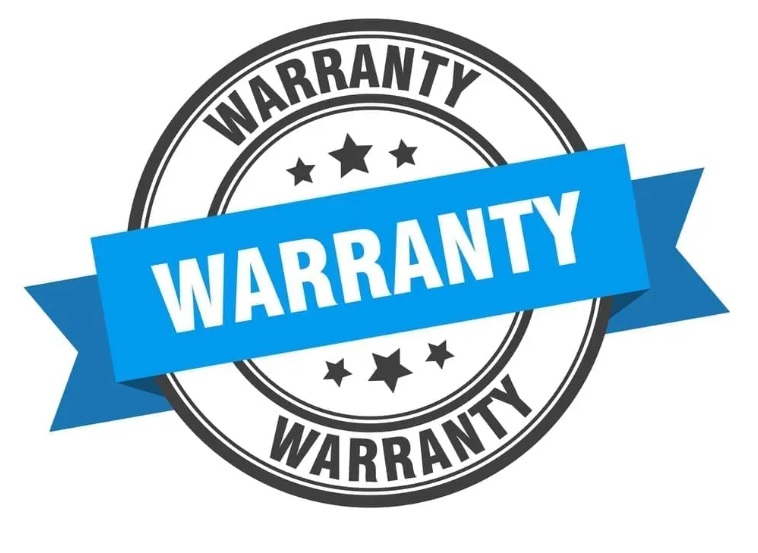


Outstanding Warranty
We provide up to one year labor and six years on parts.
High Rating
We’re rated 4.9 on Google for over 300 reviews
Licensed and Bonded
Our entrie crew is licensed and bonded for your security.



In Business Since 1984
You only stay in business this long by providing genuine value to customers.
Outstanding Financing Available
You’ll find our financing attractive, better than credit cards and competitive with banks.
Certified
We’re certified by the vendors to install and warranty the HVAC products.



Background Checks
We background check each person, and they are free of criminal activity
Drug Testing
Every employee is tested for drugs, from the CEO to the night watchman.
Professionalism
No swearing or smoking, wear cover shoes, respect your property

